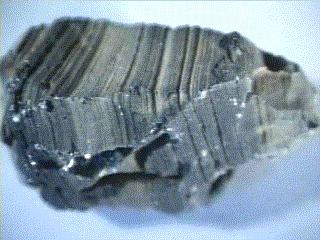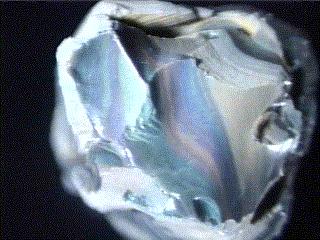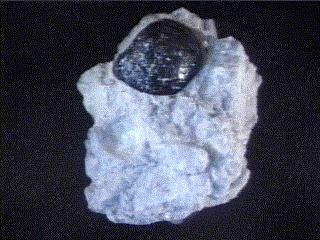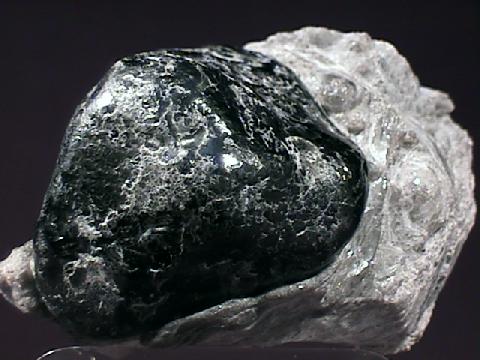
|
THE
|

|

|

|

|
- Chemistry: SiO2; Mostly silicon dioxide with large amounts of impurities.
- Class: Mineraloids
- Uses: As a semiprecious stone and ornamental stone for carvings.
- Physical Properties of Obsidian
Specimens
Obsidian has several varieties. Obsidian can contain small bubbles of air that are aligned along layers created as the molten rock was flowing just before being cooled. These bubbles can produce interesting effects such as a golden sheen, known as Sheen Obsidian or a rainbow sheen called Rainbow Obsidian. Inclusions of small, white, radially clustered crystals of cristobalite in the black glass produce a blotchy or snowflake pattern producing Snowflake Obsidian. Small nuggets of obsidian that have been naturally rounded and smoothed by wind and water are called Apache Tears.
Often confused with smoky quartz, obsidian has similar properties to quartz because of a similar chemistry. However, many properties dependant on a crystal structure are altered or absent in obsidian because it lacks any crystal structure of its own. The piezoelectric and optical properties in quartz are thus absent in obsidian. Smoky quartz usually has a splotchy or zoned distribution to its color while Obsidian's color is more uniformly distributed.
PHYSICAL CHARACTERISTICS:
- Color is dark green to dark brown and black, also can show sheens of gold or green, yellow, blue and/or purple coloration. Sometimes with white inclusions (Snowflake Obsidian).
- Luster is vitreous.
- Transparency: Obsidian is translucent in any stone of appreciable size.
- Crystal System does not apply because obsidian is
amorphous . - Habits include compact nodules or as massive layers between other volcanic rocks
- Fracture is conchoidal.
- Hardness is 5 - 5.5 (much softer than quartz).
- Specific Gravity is approximately 2.6 (average)
- Streak is white.
- Other Characteristics: Generally lacks open voids or large bubbles like other volcanic rocks.
- Notable Occurrences include Italy; Mexico; Scotland; Arizona, Colorado, Texas, Utah and Idaho, USA, as well as the Cascade Volcanic Mountain range and its associated lava beds, which stretches from Northern California into Washington state.
- Best Field Indicators are color, fracture, flow bubbles, softness, association with other volcanic rocks and lack of crystal faces.




